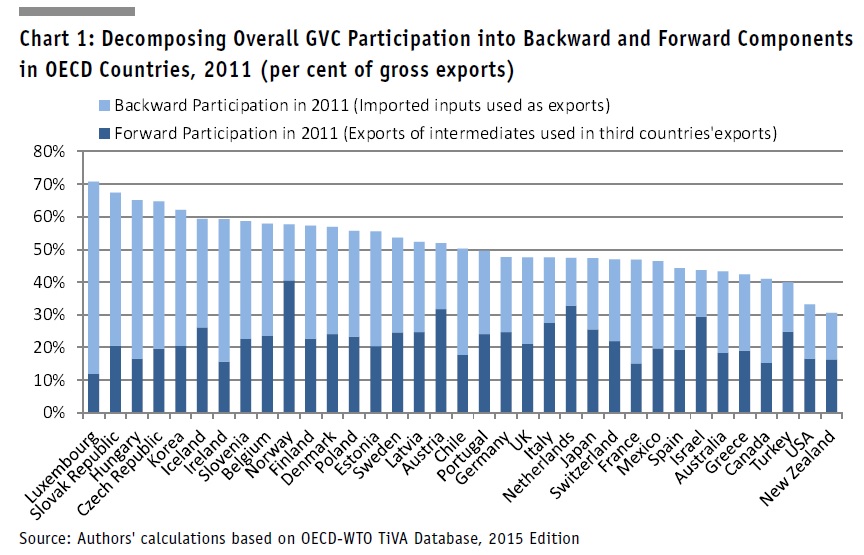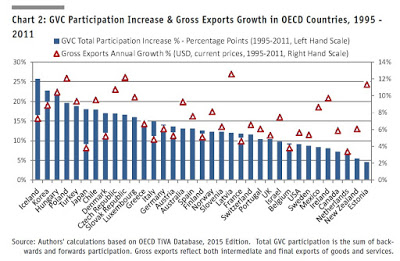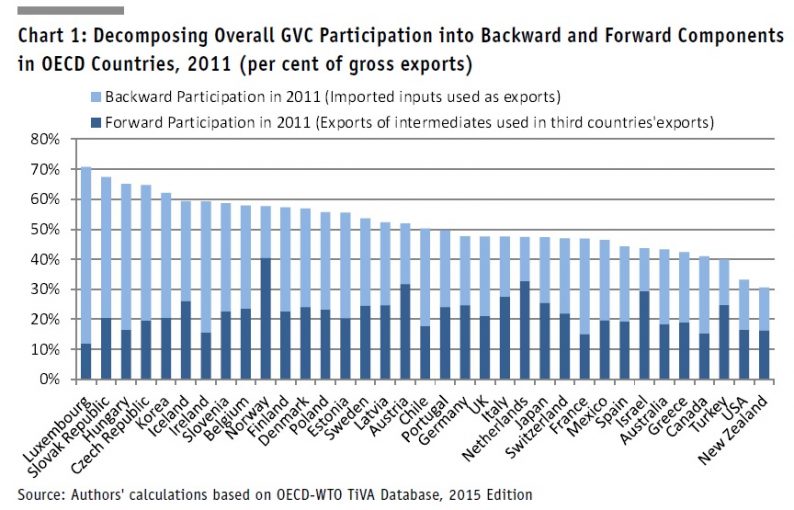Production processes have become more likely to cross international borders, thus creating what are called “global value chains” or “global supply chains.” Chiara Criscuolo and Jonathan Timmis discuss “The Chiara Criscuolo and Jonathan Timmis discuss “The” in the Spring 2017 issue of International Productivity Monitor (vol. 32, pp. 61-83). I’ll start here with a few facts, and then lay out the linkages they discuss. They write:
“Economies can participate in GVCs [global value chains] by using imported inputs in their exports (the so-called backward linkages in GVC) or by supplying intermediates to third country exports (forward linkages). The overall participation in GVCs which is the total of backward and forward participation differs substantially across countries. Overall participation measure (measured as the sum of backward and forward linkages) reflects the importance of GVCs for an economy, with GVCs accounting for between one-third and two-thirds of gross exports (of goods and services) for OECD economies in 2011 …”

In the next figure, the blue bars showing the growth of global value chains across countries, while the red triangles show the growth rate of exports. The growth of global value chains is consistently faster than growth of exports, although you have to look closely at the figure to see this, because the blue bars are measured on the left-hand axis and the red triangles with the smaller numbers on the right-hand axis.

The bulk of these global value chains are regional: in particular, there is an east Asian cluster of value chains, a European cluster, and a North American cluster. There’s some evidence that the growth of these global value chains may have slowed in the last few years, although this is a subject of ongoing research. One possible reason is that “there may also be changes in the structure of global production networks, such as China’s domestic upgrading and the reorganization of East. Asian value chains, or the shortening of value chains to mitigate supply chain risks and rising labor costs in emerging economies.”













Leave A Comment